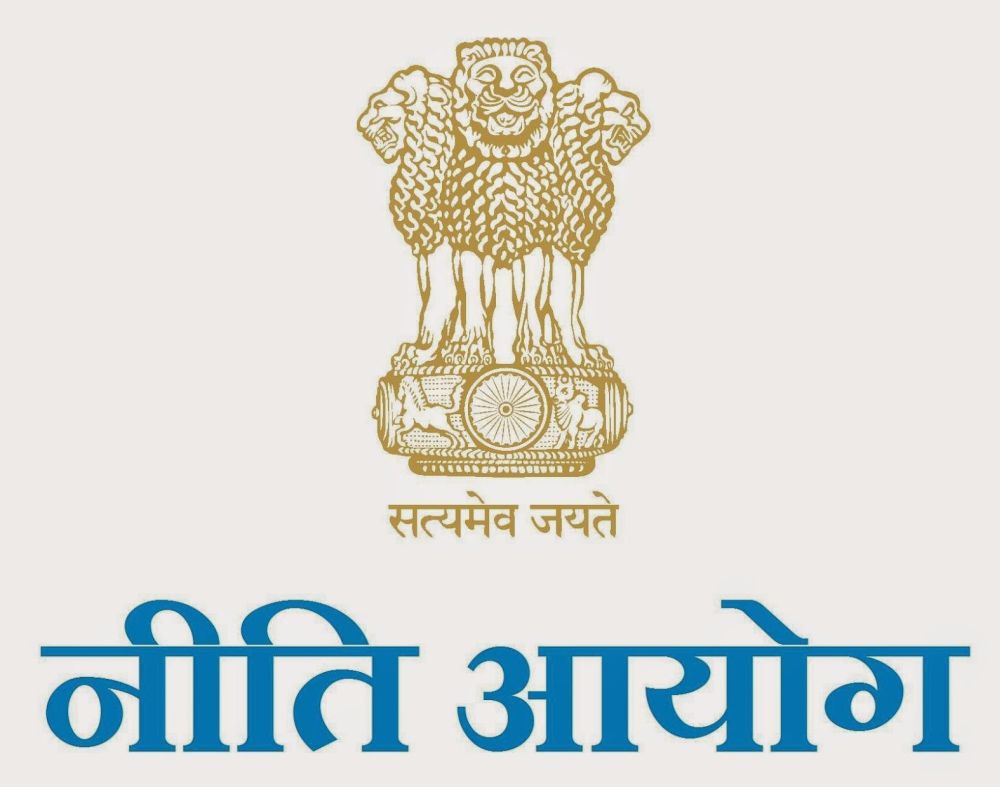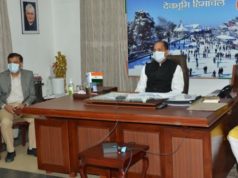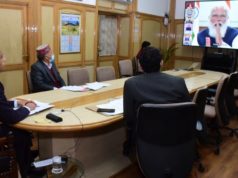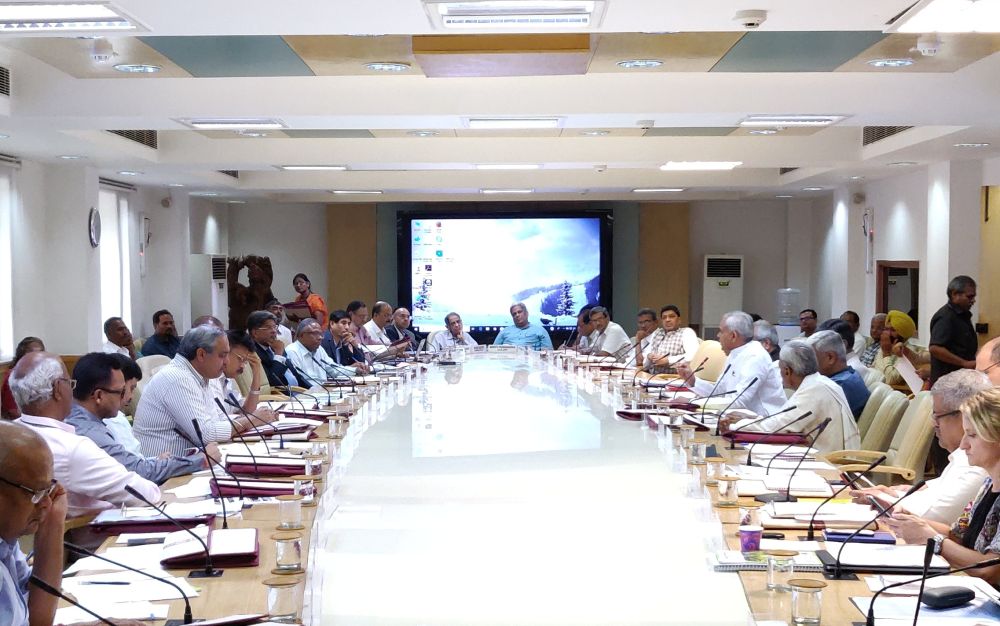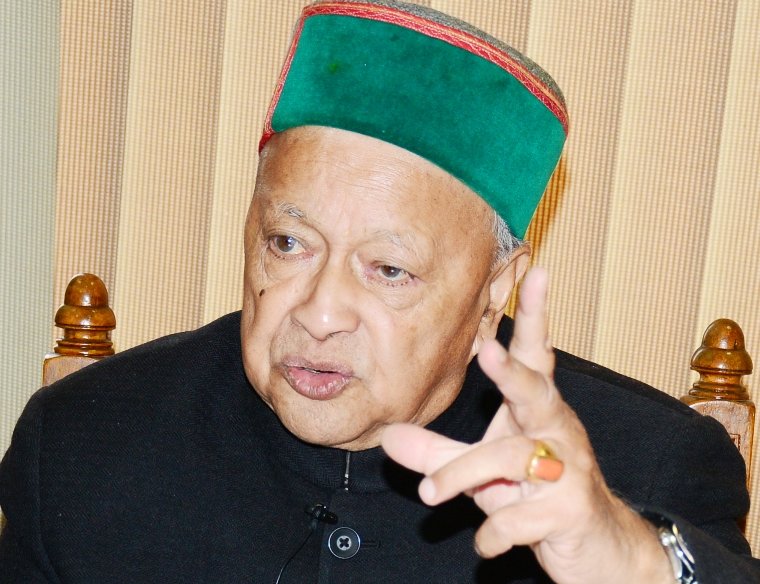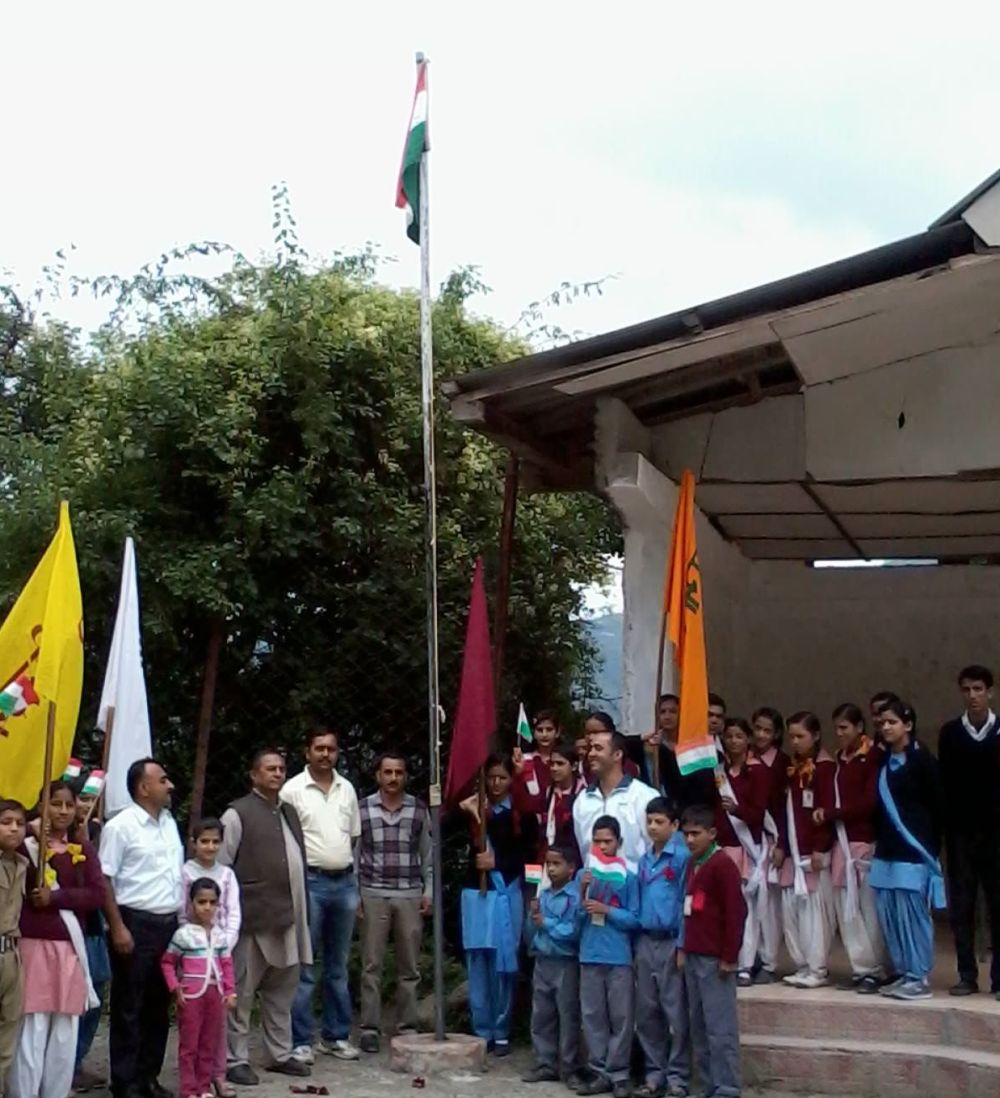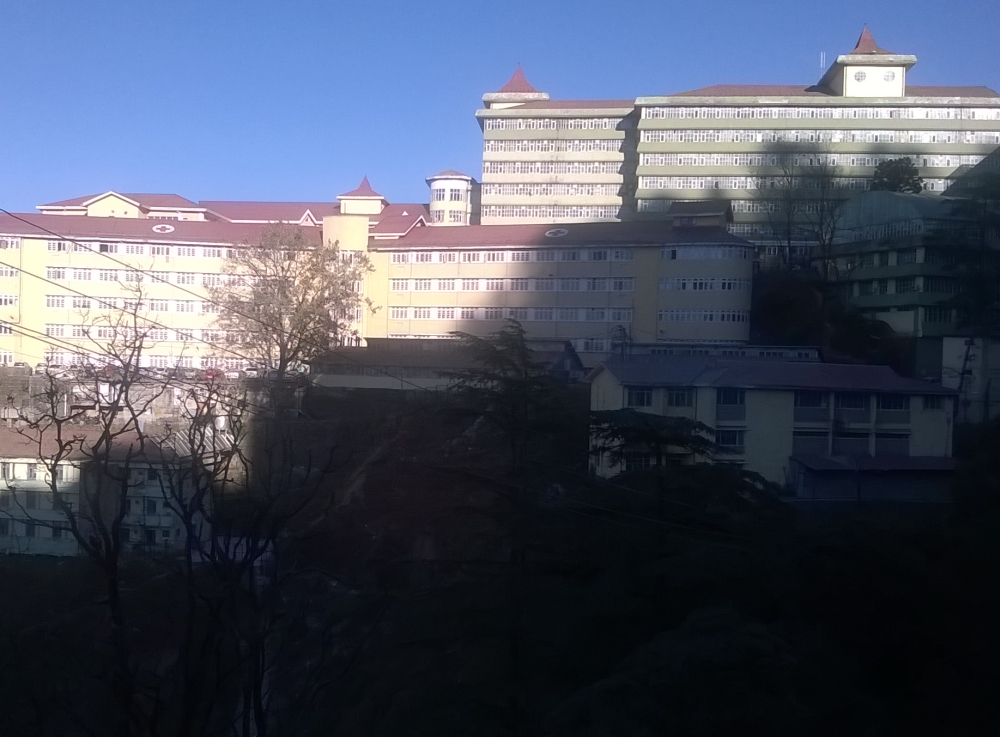Highlights of the Chief Minister’s sub group report on rationalization of centrally sponsored scheme under the aegis of NITI Aayog which was constituted on March 9, 2015 by the Prime Minister in pursuance of the decision taken in the first meeting of the Governing Council of the NITI Aayog held on 8th February, 2015:
Formation of the Sub-Group
• The Sub-Group of Chief Ministers on the rationalization of Centrally Sponsored Schemes (CSS) was constituted on March 9, 2015 by the Prime Minister in pursuance of the decision taken in the first meeting of the Governing Council of the NITI Aayog held on February 8, 2015.
• Chief Ministers of Arunachal Pradesh, Jammu & Kashmir, Jharkhand, Kerala, Manipur, Nagaland, Rajasthan, Telangana, Uttar Pradesh and Lt. Governor of A & N Islands are Members of the Sub-Group. The Chief Minister Madhya Pradesh is Convener and CEO, NITI Aayog is Coordinator of the Group. The Sub-Group undertook extensive consultations with the Central Ministries, including the Ministry of Finance, NITI Aayog and States and UTs including those which were not represented by their Chief Ministers/ LGs in the Sub-Group. In addition, at the instance of the Sub-Group, CEO/NITI Aayog undertook regional consultations at official level at Kolkata, Chandigarh, New Delhi and Hyderabad with States/UTs. The Sub-Group itself met four times and has finalized its recommendations on the basis of such extensive consultations. In this endeavor, the Sub Group has been assisted by a Working Group of senior officers drawn from NITI Aayog, Central Ministries and States/UTs.
• It is matter of great satisfaction that despite such wide ranging consultation, this report has the broad agreement of not only the member chief ministers but also of the non-member states
Guiding Principles
• The formation of the Sub-Group is testimony to the resolve of the Union and the States /UTs to work as Team India in the spirit of Cooperative Federalism towards realisation of the goals of VISION 2022 when we will celebrate the 75th year of Independence. The objectives of the VISION are broadly: (a) providing basic amenities to all citizens in an equitable and just manner for ensuring a life with self-respect and dignity, and (b) providing appropriate opportunities to every citizen to realize her potential.
• For realising VISION 2022, the Governing Council of NITI Aayog is engaged in developing the contours of the National Development Agenda. CSS are key instruments for meeting the objectives outlined in the National Development Agenda.
• The sectors covered under the National Development Agenda are critical to the transformation of India and the outcomes will transcend State boundaries. Since a significant amount of Plan Transfers to States/UTs are routed through CSS, and since many CSS interventions are in the social sectors, it is imperative that they are designed to be effective and outcome-oriented. Moreover, they should be adequately funded and their implementation should be sufficiently flexible to enable the States to efficiently implement them according to local requirements and conditions.
Provision for CSS in Union Budget of 2015-16.
• In the Union Budget for 2015-16, CSS are classified as Central Assistance to State Plan (CASP). In 2014-15, budgetary provisions were made for 66 CSS of which 17 large schemes were designated as ‘flagship’ programmes.
• With effect from BE 2015-16, following the acceptance of the recommendations of the 14th Finance Commission (FFC) by Government of India, the devolution to States has increased from 32% to 42% of the net Union Tax Receipts. In absolute terms, it is estimated that this entails additional devolution of Rs. 1.78 lakh cr to the States. As a result, the fiscal space available with the Union Government to fund CSS has shrunk.
• The 14th FC has recommended that sector-specific transfers from the Union to the States/UTs should be confined to sectors like education, health, drinking water and sanitation. However, in view of the preponderance of CSS being interventions in key sectors of national importance, the Government of India has retained 50 of the 66 ongoing CSS in Budget 2015-16. The balance are being either taken into the Central sector, or reformulated as new Umbrella Schemes or have been transferred to the States.
• Hence, post-14thFC devolution, the BE for Central Assistance to State Plan (CASP) has been reduced from Rs. 3.38 lakh cr in 2014-15, to Rs. 2.05 lakh cr in 2015-16. The BE for CSS has reduced from Rs. 2.52 lakh cr to about Rs. 1.69 lakh cr (excluding provision for CSS for UTs).
Rationalisation of CSS: Perspectives of Centre, State and UTs:
• Henceforth only Schemes/Programmes in CSS in key identified sectors will comprise the National Development Agenda.
• The number of Schemes/Programmes should be reduced for improving their visibility and impact.
• Investment in Core Schemes/Programmes should be maintained at least at their current level.
• While deciding the funding pattern, special dispensation needs to be given for North Eastern and Himalayan States and UTs.
• States should be given flexibility in the implementation of the Schemes.
• Given their critical role in successful implementation of Schemes, the support from the Centre for remuneration of grass-root workers like ASHA, Aanganwadis, Contract Teachers etc. should be maintained at present levels for at least two years.
• The processes and procedures for release of Central Assistance (CA) to the States under these Schemes should be simplified.
• There should be a degree of certainty regarding the availability of funds and Central Assistance likely to be available under these Schemes in the medium term.
• Projects/activities that are already sanctioned earlier under these schemes should be completed for which adequate provisions should be made.
• NITI Aayog should emerge as a platform for addressing problems in implementation of Schemes/Programmes under the National Development Agenda.
Major Recommendations at a glance:
• Focus of CSS should be on the Schemes that comprise the National Development Agenda where the Centre and the States will work together in the spirit of Team India.
• Sectors/ tasks/objectives like Poverty Elimination including MGNREGA and Schemes for social inclusion; Drinking water and Swachh Bharat Mission; Rural Connectivity including Electrification; Access Roads and Communications; Agriculture including Animal Husbandry, Fisheries and Irrigation; Education including Mid Day Meal; Health, Nutrition, Women and Children; Housing for All: Urban Transformation and Law and Order and Justice Delivery System would be Core Sectors as they constitute important elements of the National Development Agenda. MGNREGA and Schemes for Social inclusion would be accorded highest priority.
• Accordingly, existing CSS should be divided into: Core and Optional schemes.
• Amongst the Core Schemes, those for social protection and social inclusion should form the Core of the Core and be the first charge on available funds for the National Development Agenda.
• Ordinarily, in any sector there should be one Umbrella scheme having the same funding pattern for all its sub-components.
• Investment levels in Core Schemes should be maintained so as to ensure that the optimum size of the programme does not shrink.
• Funds for Optional Schemes would be allocated to States by the Ministry of Finance as a lump sum and States would be free to choose which Optional Schemes they wish to implement. Additionally, the States have been given the flexibility of portability of funds from optional schemes ( should it choose not to utilize to utilize its entire allocation under that head) to any other CSS component within the overall allocation for the state under CASP.
• From now onwards, the sharing pattern should be:
For Core Schemes
a) For 8 NE and 3 Himalayan States: Centre: State: 90:10
b) For other States: Centre: State: 60:40
c) For Union Territories: Centre: 100%
For Optional Schemes
a) For 8 NE and 3 Himalayan States: Centre: State: 80:20
b) For other States: Centre: State: 50:50
c) For Union Territories: Centre: 100%
• Existing funding pattern for schemes classified as Core of the Core should continue.
• Remuneration for ASHAs, Aanganwadi and Contract Teachers to be protected. However, Central Assistance (CA) may be capped at existing level for the next 2 years in this regard.
(Provision for incomplete projects: all works begun in projects in existence in 2014-15 in which work has been awarded till 31 March 2015 should be funded on the existing pattern for the next 2 years.
• Flexibility in Schemes and Institutional mechanism: 25% allocation in a Scheme should be flexi-fund, to be spent in accordance with Ministry of Finance guidelines.
• Design of CSS should be broadly like Rashtriya Krishi Vikas Yojana (RKVY) with a large number of admissible components in a scheme, and the States being free to choose components to suit their local needs.
• Cost norms in construction component of schemes should be decided by States subject to capping of allocation by the Centre.
• Releases of funds should be simplified, based on yearly authorization. Actual release of cash would be on quarterly basis.
• Releases should be based on Utilization Certificates of the installment prior to the last installment to a State/UT.
• The Ministry of Finance would make Scheme-wise allocations for Core Schemes. In each Core Schemes, there would be transparent criteria for State allocation of funds. There would also be transparent criteria for the lump sum allocation to States for Optional Schemes. These criteria to be evolved by NITI Aayog in consultation with State Governments and central Ministries.
• NITI Aayog to have concurrent jurisdiction in monitoring of Centrally Sponsored Schemes in the States and Central Ministries.
• Third-party evaluation by NITI Aayog.


